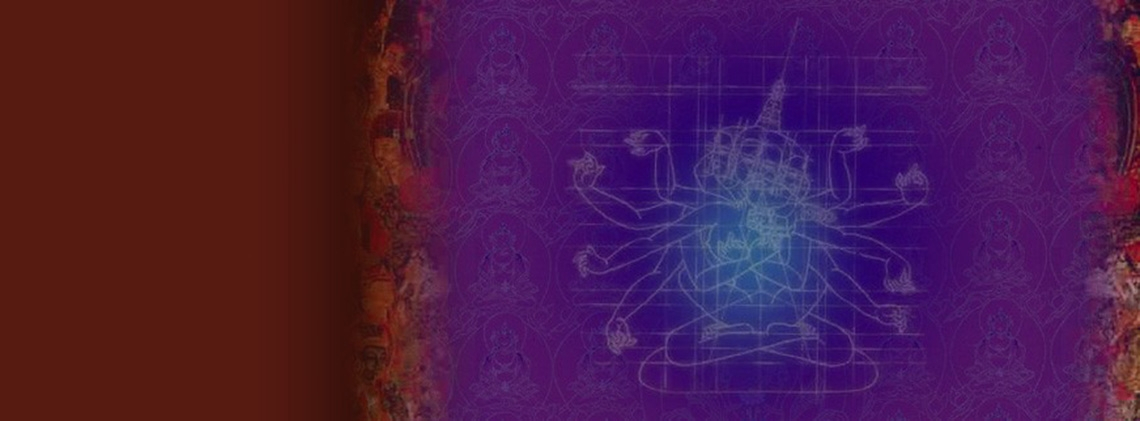
Tibetan Buddhist Art
Splendid
Chi Culture
Topic
Tibetan Buddhist Art
Tibetan Buddhism is one of the three major schools of Chinese Buddhism. It developed during the Tibetan era (ca. tenth century) from Indian and Chinese sects. Sometimes known as Lamaism, it is the branch of Buddhism associated with ethnic groups in the Tibetan language family, including Ü-Tsang, Mongolian, Monguor (Tu), Yughur, and Nakhi. In the course of its development it absorbed elements of both Tibetan folk religion and the Bon religion, including indigenous gods and their related rituals. In the ninth century when Dunhuang was ruled by the Tibetans, Tibetan Buddhism was introduced into the Western regions of China. From that time, Tibetan Buddhism has spread all over the Tibet Autonomous Region, Qinghai province, western Sichuan, southern Gansu, the Diqing Tibetan Autonomous prefecture of Yunnan, and the Inner Mongolia Autonomous Region. Outside China, it has also reached Bhutan, Mongolia, Russia, the republic of Buryatia, Kalmykia, and Tuva. In recent years, Tibetan Buddhism has also become popular in Western countries.
Tibetan Buddhism embraces both Mahayana and Hinayana doctrines although the former makes up its core. Most of the sects of Tibetan Buddhism are related to certain political forces and have become combinations of church and state. In general, Tibetan Buddhist thought does not differ from the Buddhist philosophy. They share common doctrines; for instance, the belief that all life is suffering, and that the world is illusory, as well as teaching about reincarnation, and karmic retribution. The main difference is that Tibetan Buddhism has its own unique interpretation of Buddhism: it has incorporated the aboriginal Tibetan religious and cultural beliefs into itself to form a unique Buddhist philosophy. These ideas are more obviously reflected in the doctrinal systems of different sects of Tibetan Buddhist teachings.
Tibetan art is mainly religious art. However, it embodies not only religious themes but the customs and culture of the people; these two components cannot be separated. For example, in the Potala Palace frescos the story of the construction of the Jokhang Monastery and the Samye Monastery are depicted; however, so are the stories of Tsenpo, and the geomantic divination that Princess Wencheng (ca. 623–680) made for the construction of the temple. The frescos in the Potala Palace also show the Dalai Lama’s pilgrimage to the Qing emperor. Mani stones, which carry sutra inscriptions and statues of the Buddha, are found all over the mountains. Although their inscriptions are Buddhist, the stones themselves were actually a form of ancient Tibetan worship that propitiated mountain spirits and boulders. The Tibetans often built their palaces on summits or even on boulders because, according to Tibetan mythology, Tsenpo descended from heaven onto the summit of Yarlha Shampo. Although the palaces were built on summits and boulders for religious reasons, it also aided in their defense. The buildings are not relatively high, but the towering mountainous terrains enhanced their breathtaking effect as well as creating a sense of sublimity and sacredness. This is a style typically seen in palaces built in early times (seventh–ninth centuries), such as the Pabonka Hermitage, and the Yungbulakang and Potala palaces. Most Han Chinese monasteries were hidden deep in the mountains, away from residential areas. Even though one does not normally think of monks as maintaining close ties with their families, Tibetan monks did so as it was their families who provided them with food. Therefore, Tibetan monasteries were often located at the center of residential areas; many towns began and developed around monasteries, such as Lhasa, Gyangzê, and others. Tibetan Buddhism saw the birth and development of a new kind of art, the thangka which refers to a kind of scroll painting. Mural art is also an important category that debuted during the Tibetan period (seventh–ninth centuries) and gradually flourished while Buddhist monasteries were being built. The earliest group of extant monastery murals is preserved in the Jokhang Monastery at Lhasa. The rich and bright colors are the distinctive artistic style of Pala, in eastern India. In addition to thangka and murals, Tibetan Buddhist art stands out for three-dimensional sculptures in a variety of media such as stone, wood, polychrome ceramic, and metal. Satchāya (statues of the Buddha made from molds) were abundant. When we appreciate Tibetan Buddhist art, our attention should be not only on the benevolence and compassion of the Buddha, the unrestrained manner of Tara who travels through the air, and the might of the guardian deities, but also on the understanding of their deep symbolic meaning. For example, each of the faces of Ekādaśamukha Avalokiteśvara is a different color and carries a different symbolic meaning: the three faces in the front look peaceful and quiet; they represent the Bodhisattva’s expectation and recognition of good conduct and virtues of all living beings. The three faces on the left-hand side look angry and represent the three defenders who protect all living beings from demons. The three faces on the right-hand side, with prominent teeth, are both good and evil, and represent the three guardian deities of Buddhist karma. There is another, angry face, which urges people to do good deeds. The face on top of the head represents Amitabha, who preaches to the Mahayana faithful.
Chinese culture is pluralistic, created by the collective efforts of fifty-six ethnic groups, of which the Han is but one. Tibetan Buddhist art is a wondrous blossom. It has been cherished and loved by people around the world and is one of our cultural treasures.



